A loop, a spiral, and other infinite objects
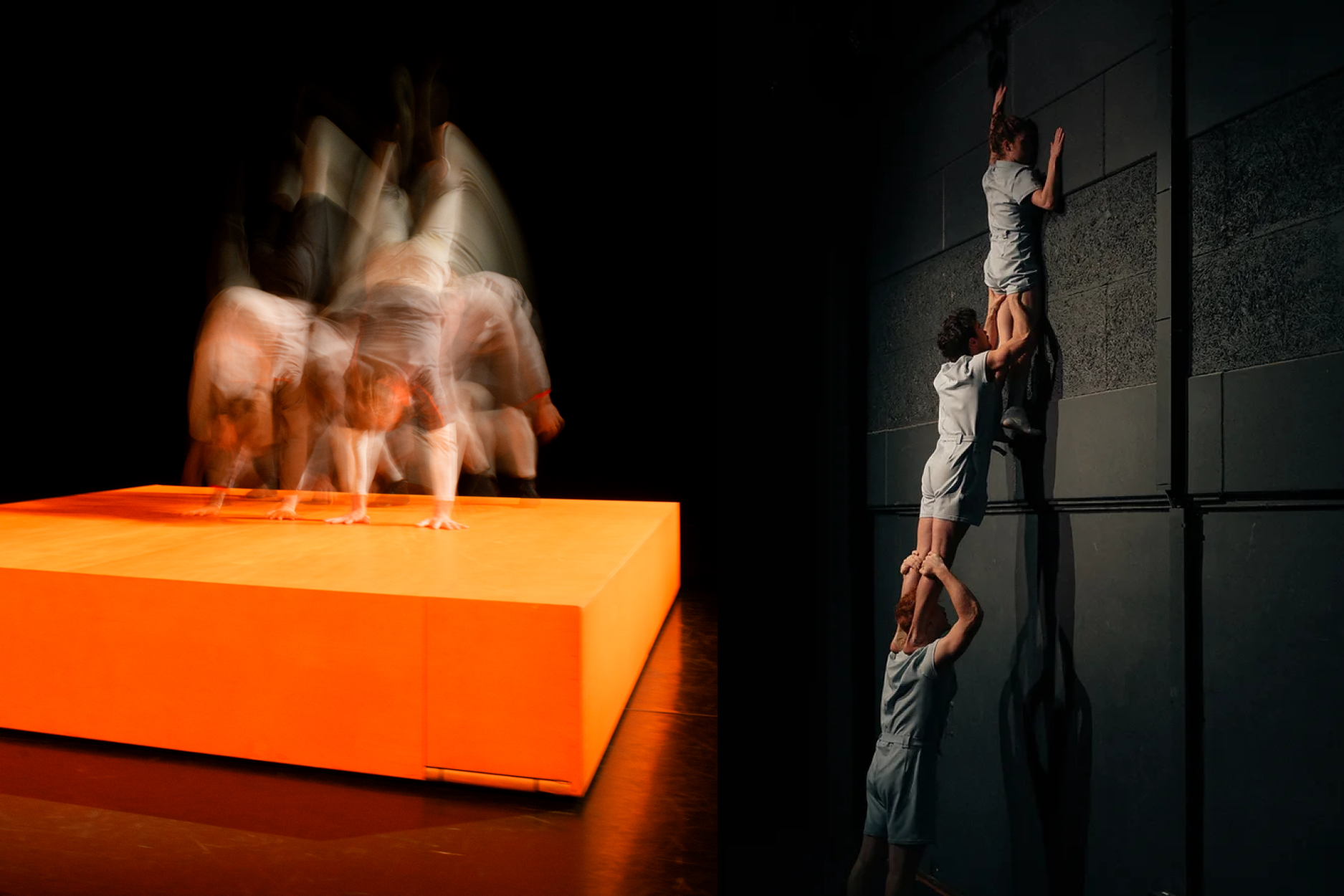
The infinite possibilities of movement in repetitive and physically demanding forms were explored during an evening in Korzo Theater in the Hague, at the last edition of Cirquemania #17. The festival hosted two of my favourite shows from the past few years, both by two young companies who met at the circus department of Codarts in Rotterdam. Cécile by Sinking Sideways, and Concrete by Knot on Hands, invited the audience in their hypnotistic and poetic journeys into perpetual motion. Always suspended and constantly moving, the performers’ interwoven bodies played with the limits of moving endlessly resulting in quirky, absorbing, and floating shapes and landscapes. This article aims to frame their dance acrobatics styles and aesthetic choices.
‘’I felt like I watched two juggling shows’’, I heard an audience member tell their friends after the shows. “Or rather two shows about juggling. Human juggling”. In Cécile and Concrete, the two young acrobatic trios embody what perpetual motion in space might look like. Starting from the interrelated nature of their bodies, they develop two masterfully choreographed pieces that work like well-oiled machines. Although it might sound dehumanising to call people machines, in this case, one could think of the myth of perpetual motion defined as “the action of a device that, once set in motion, would continue in motion forever, with no additional energy required to maintain it. Such devices are impossible on grounds stated by the first and second laws of thermodynamics.’’ What if human bodies try to look for endless mobility patterns in space?
In Cécile and Concrete, the circus companies’ mastery of craft is displayed on stage and perpetuates their intent to disentangle what they are doing. Both companies develop their research in motion, using clever stage, music and light designs. At times, the repetitive music can almost create the soundscape of a white noise, a hypnotising device that can make you lose sense of time, and question your eyes, as you descend into illusion. In other times, the more upbeat tones might refer to heartbeats that surprise you by how faster than usual they’ve become. Then, the clever use of lights might suggest interpretations of what you’re watching, as the movement patterns have gradually become more exquisite and the bar has been raised, bringing you out of your hypnosis once again. The unity of these dramaturgical, choreographic, and aesthetic choices reinforces and expresses what these two companies achieve to create: a loop, a spiral, or anything else you can imagine that could best describe research into the infinite motion of three bodies in space.
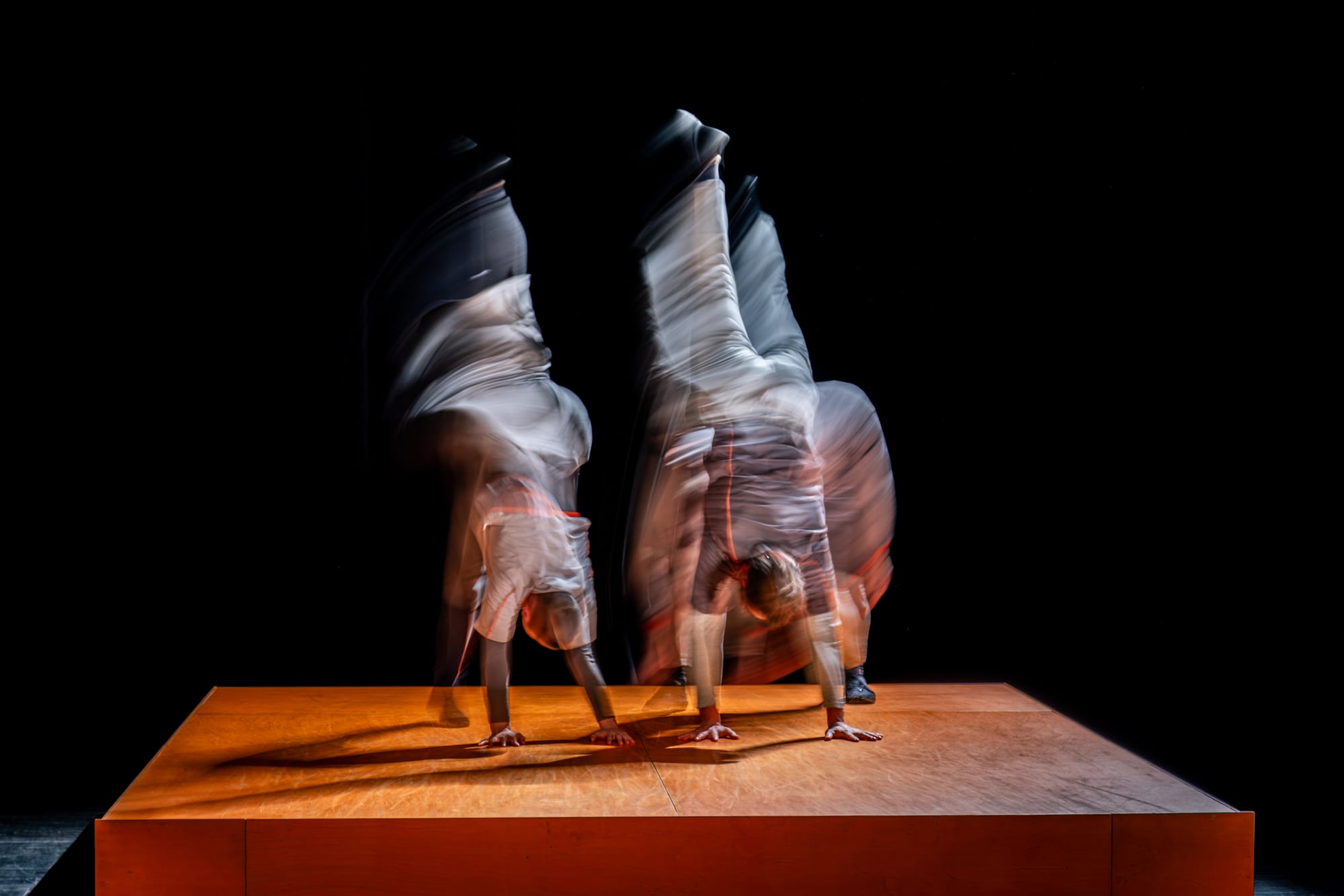
Juggling: To infinity and beyond
Sinking Sideways is a young Flemish dance acrobatic circus company composed of the German artist Xenia Bannuscher and the Belgians Dries Vanwalle and Raff Pringuet. They all met while studying at Codarts, in Rotterdam, Raff graduating a year later than Xenia and Dries and joining their duo.
Cécile is the name that Sinking Sideways decided to give to a piece of their creation before creating the full show, as they revealed to me in a previous interview. Following their first show René, in which they were researching the principle of rebounding, Cécile is their second creation, which will be followed up by their current research, Ezra. All of their creations are sticking to the premise of names.
In the words of Xenia: ‘’We do this abstract kind of work that is really visual and we don't like to give away too much. You always give away something by the title and the text, but we don't want to give so much to the audience about what they should read into it or what the meaning is, because it's very open to interpretation. And we also like this aspect of, you know, if you have a child, you choose a name; but you don't know who they will become, in the end. And it's very different, of course, I imagine. But we like this idea of, we give a name and we have, of course, a bit of an idea, but actually, you only find out in the process what it means in the end.’’
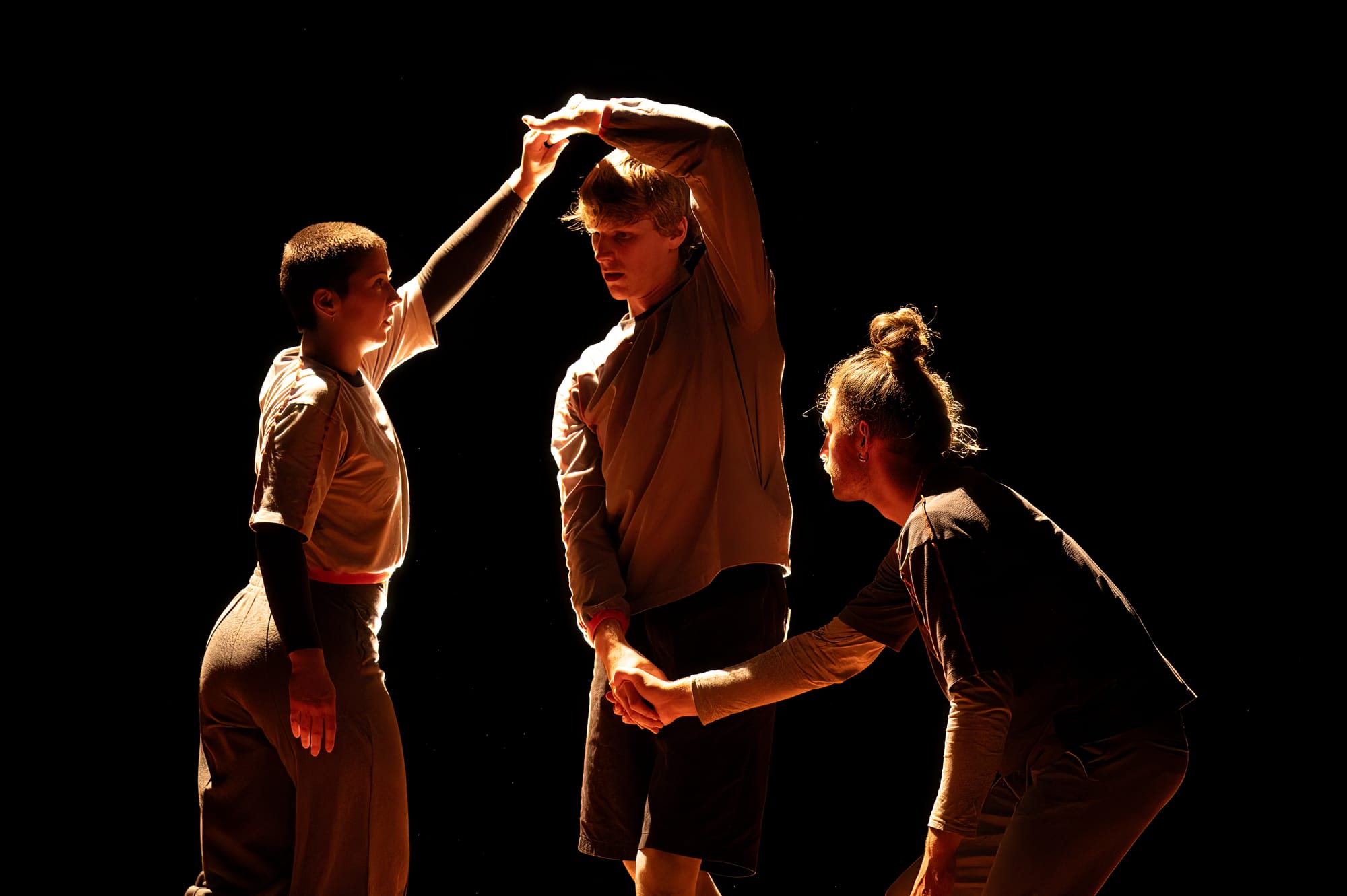
Cécile is exactly what they had in mind: a dance acrobatic show about juggling. Sinking Sideways built their choreographic patterns inspired by the basic 3-ball cascade routine in juggling, in which one ball is always in the air, and one must be thrown before catching the next one. The trajectories of their bodies in space match what the balls usually do, floating between each other, filling the negative space and the gaps between each other, as the pattern never stops until the end of the show, when the lights are out.
This constant dynamic movement organises the three performers’ bodies in space, in a minimalistic set design that contains only them and their own stage, which they asked to be built according to the exact dimensions of their company van to be transported more easily. Therefore, their small stage is a conscious artistic choice, giving them more freedom and opportunities through its restrictions. Sticking to this stage and the same pattern is an agreement made in silence between them and the audience at the start of the performance, and it ritually continues until the performance ends.
Enhancing them and their stage are the lights that cast huge shadows at their back, magnifying the effect of the three figures' constant movement pattern. They become a multitude, a flawless version of individuals in motion. One could draw a parallel to the everyday hustle in a busy city, where everyone is in a hurry to get somewhere as soon as possible, unable to stop for a split second and observe what is around them. At this point it is not anymore Xenia, Dries, and Raff, it is bodies in space that are in constant rhythmic motion, while their faces remain neutral, not showing any particular expression.
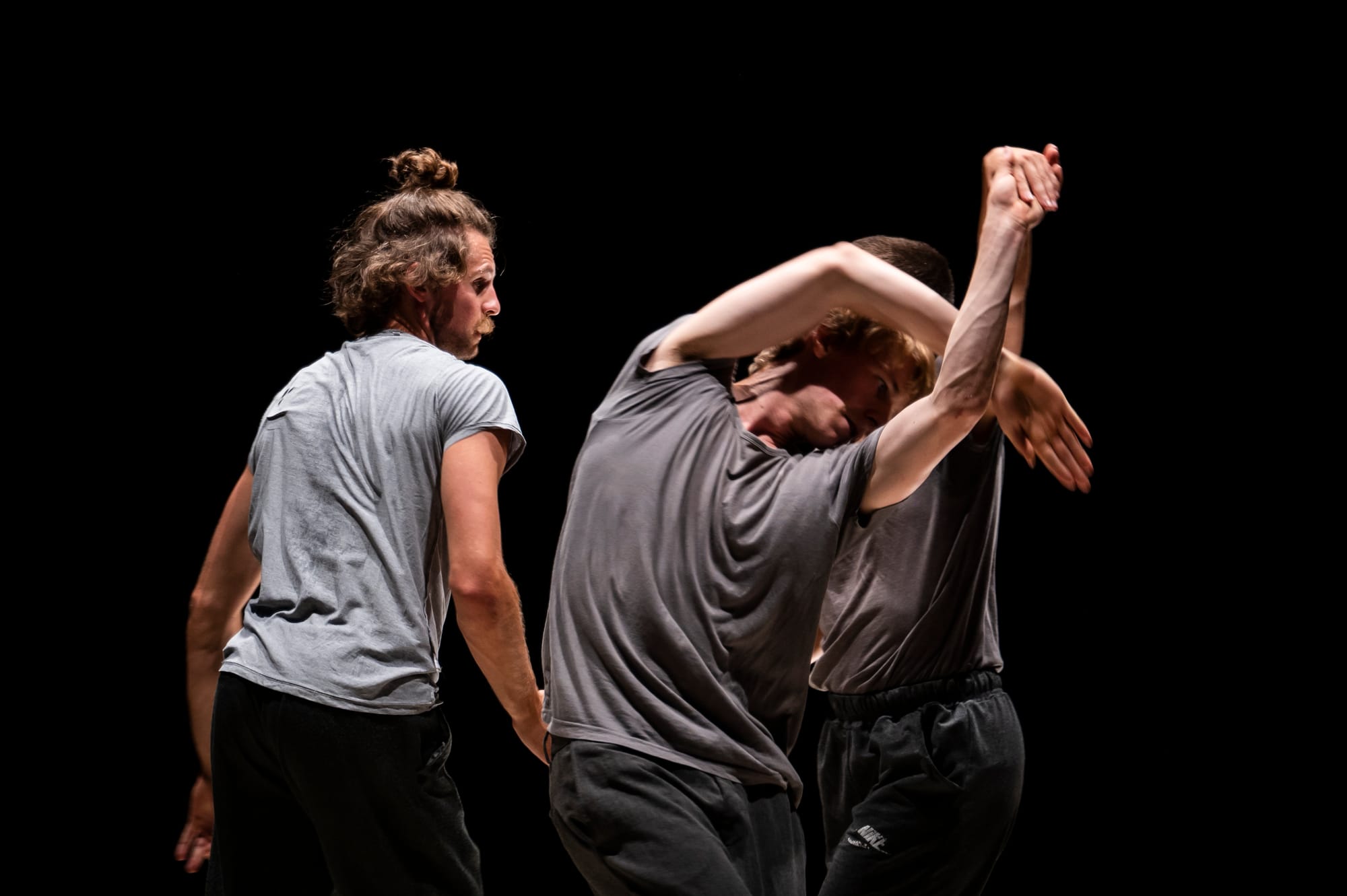
The most captivating element about Cécile though, is that from the moment the lights are on, and the movement starts, until it ends with lights out, it feels only like a second. You’re drawn into the repetitive motion as it gradually intensifies in pace and difficulty. Together with the escalation of the movement, the music that accompanies them, becomes more intense and of a higher pitch, while keeping the same steady rhythm. At this point their faces start showing more, as they have moved on from simple-looking steps, into rolls, tumbling, sliding, and hand balancing, although always faithful to their pattern. And as the stakes keep rising and the difficulty increases, their own ‘’machine’’ shows it can absorb minimal bumps or mistakes, as if they never happened. Instead of showing signs of tiredness or worry, the three keep going, looking as if they are enjoying the adventure they thrust themselves into. They echo a mutual sense of attention, solidarity, adaptability to the changing environment, and resilience to keep going until the end.
Having seen Cécile three times since last year, I can confirm that the mastery of their choreography relies on its -easily mistaken for simplicity- underlying complexity. Each time I saw it, I observed something which I thought was different. However, as Dries reassured me, it is always the same, unchanged choreography. In the end, this physically demanding piece proves again that perpetual motion can exist, but perhaps only up to a breaking point, a limit, or to the edge, where gravity and the laws of humanity still exist. Nonetheless, it is a playful journey that is worth taking. Even as a reinvigorating one, especially if you fall hypnotised by movements and repetitions, as they seem like variable heartbeats.

Hand-in-hand-in-hand
Knot on Hands is a partner acrobatic circus trio formed in 2017 by the Dutch artist Britt Timmermans, the German Mario Kunzi, and the Belgian Tijs Bastiaens. As Sinking Sideways, they all met in Rotterdam during their studies at Codarts. Together, they explore the infinite possibilities of partner acrobatics in motion, through a base (Tijs Bastiaens), a flyer (Britt Timmermans), and a hybrid (Mario Kunzi), in what we could call a hand-in-hand-in-hand discipline.
The name Knot on Hands, as they explain in this video as ‘’maker for a week’’ at TENT, seemingly comes from one of their shapes, in which they are tangled and rolling all together, although, as they admit, they are not sure any more where it came from.
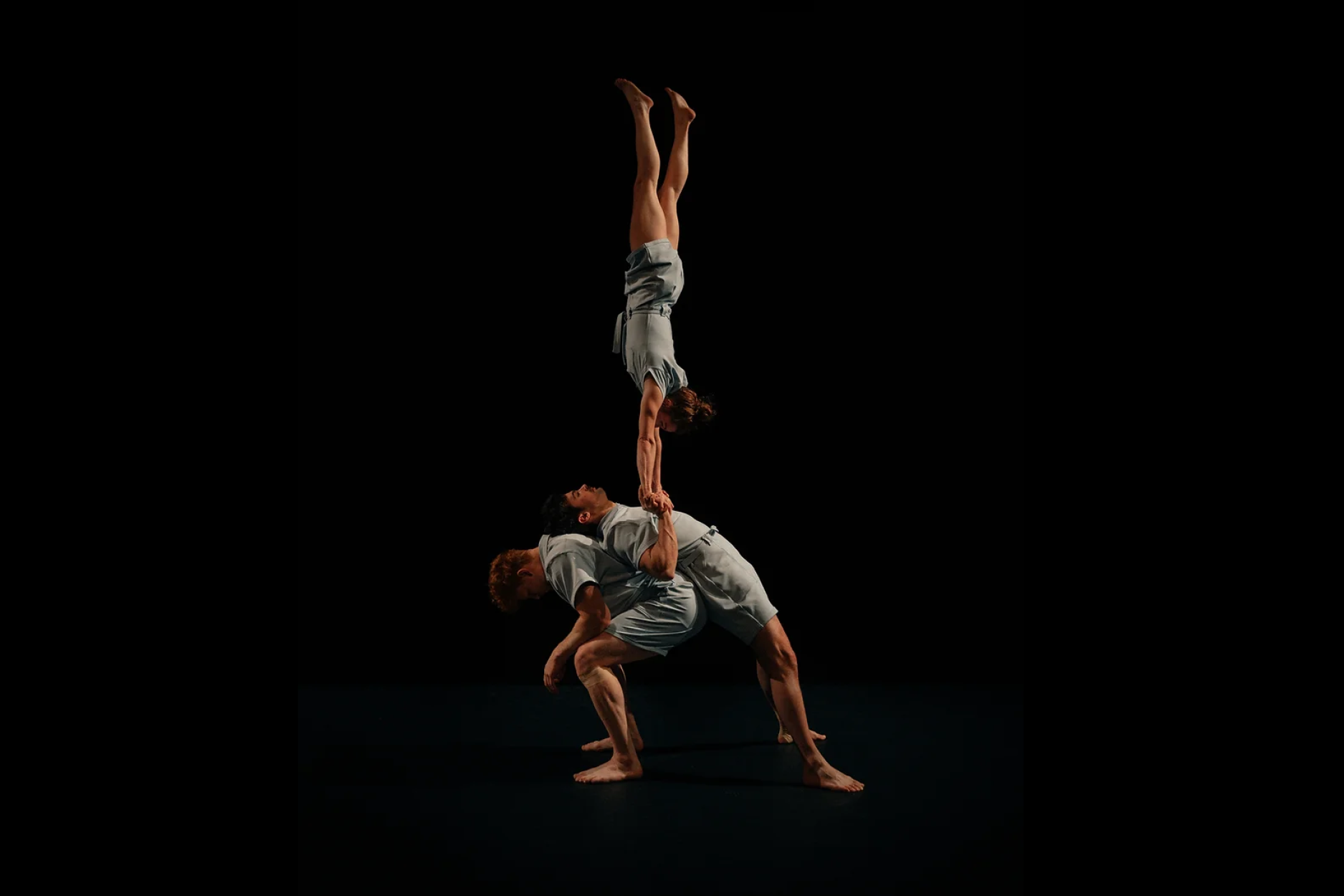
Concrete, their first full-length show, delves into perpetual motion by looking for the limits of movement that three-bodies-as-one can achieve as they tangle, tumble, and balance, related and fitting onto each other's bodies. The piece is composed of three parts. They call them Roll, Weave, and Stay, in a trilogy that offers a new perspective into the classic tricks of partner acrobatics, taking the discipline further through physicality and trust. The movement progresses from Roll, a slow and flowy rolling piece in which you can’t tell their bodies’ limbs apart, as they flow seamlessly into one another. Then, a brief pause comes on stage when they look at each other for the first time from a distance. In what feels like forever, they each look human again. As they prepare for the next part, they leave a suspended alienating sensation contrasting with their previous flowing and interconnected entity.
Following the intermezzo, the more rhythmic and dynamic Weave opens up the image, giving the stage to more expressive and harmonious movements that raise the bar of risk while seeming effortless and precise. Despite all the sweat, cuts, and bruises from a physically demanding and non-stop piece, the movement of Knot on Hands makes it look reassuring and calming as they move on to the final chapter, Stay, in which they elevate each other even higher, climbing a wall and trying to stay on top of it, in countless ingenious ways.
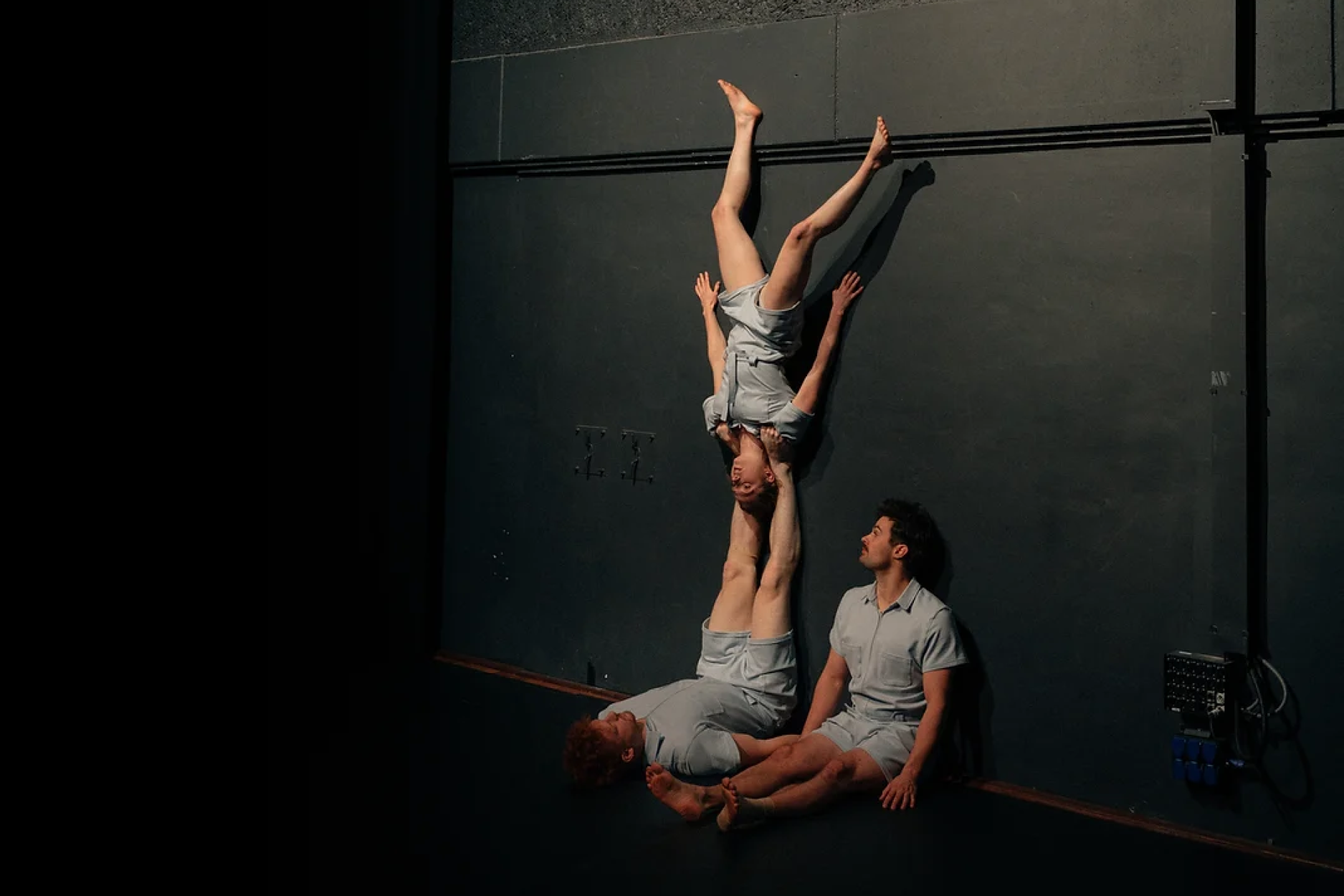
In my eyes, thanks to the light design of the piece, pointing to the left of the stage at the beginning, then gradually moving centrally to become brighter and expanded, ending up pointing to the stage on the right and then onto the wall that the trio was climbing, Concrete felt like the passing of a day. The process between the chapters and the movement's progression was like going from dawn till dusk, from birth to death, and between. Like a caterpillar, Knot on Hands develops patterns in perpetual acrobatic motions, seamlessly shaping into new dimensions. It remains to see where they go from here as the trio joins forces with the renowned dance and partner acrobats Felix Zech and Marta & Kim in the performance Meander, set to premiere in Autumn 2024.
Both Cécile and Concrete represent two physically intense and visually stimulating contemporary circus performances, which, in their relentless nature with minimalist set design, reveal a similar fundamental trust and safety bond between the performers. Both ensembles have masterfully developed high-level technique choreographies that require constant focus and communication with each other. Their bodies are interconnected and interdependent as they explore the limits of human movement into space. Through their pieces' hypnotist, joyful and symbolic characters, they do not aim for spectacularity through vibrant flashing lights and noisy beats, preferring to look inwards first, thus unveiling the infinite variant complexity of human movement in action.
